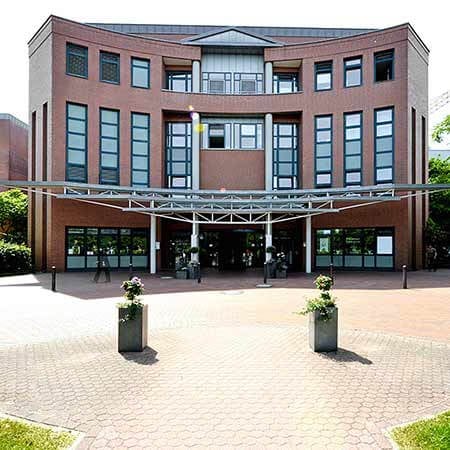Top Hospitals for Dentistry
Each hospital in this list meets Booking Health’s strict international standards: at least 250 surgeries per year, ISO‑certified quality management, and documented survival outcomes. Our medical board then ranks the clinics by clinical expertise, technology, and patient‑satisfaction scores.

The Dentram Dental Clinics Istanbul is a progressive dental center with excellent infrastructure, state-of-the-art medical equipment and brilliant specialists. The patients of the clinic are guaranteed a professional solution to dental problems of any complexity. The clinic was founded in 1994 by orthodontist Aylin Yalçın

ALL-ON-4 Implant
Price from:
0.00
Go to the program ALL-ON-6 Implant
Price from:
0.00
Go to the program Crowns
Price from:
0.00
Go to the program Dental braces
Price from:
0.00
Go to the program Dental Implants (one-stage method)
Price from:
0.00
Go to the program Full denture
Price from:
0.00
Go to the program Root canal treatment
Price from:
0.00
Go to the program Sinus Lift
Price from:
0.00
Go to the program Surgical extraction
Price from:
0.00
Go to the program Teeth Whitening
Price from:
0.00
Go to the program Veneers
Price from:
0.00
Go to the program 
According to the Focus magazine in 2019, the University Hospital Würzburg ranks among the top national German hospitals! The hospital is one of the oldest medical facilities in Germany. The centuries-old traditions of first-class treatment are combined with the very latest achievements of modern evidence-based medicine and 









ALL-ON-4 Implant
Price from:
7867.72
Go to the program ALL-ON-6 Implant
Price from:
11098.38
Go to the program Crowns
Price from:
0.00
Go to the program Dental braces
Price from:
0.00
Go to the program Dental Implants (one-stage method)
Price from:
9343.42
Go to the program Full denture
Price from:
0.00
Go to the program Root canal treatment
Price from:
0.00
Go to the program Sinus Lift
Price from:
4902.32
Go to the program Surgical extraction
Price from:
0.00
Go to the program Teeth Whitening
Price from:
0.00
Go to the program Veneers
Price from:
0.00
Go to the program 
The University Hospital Oldenburg is a multidisciplinary medical complex offering top-notch services of the European standard. The hospital has 20 specialized departments, 15 highly specialized centers, and more than 10 institutes. The hospital provides services in almost all areas of modern medicine: general and abdominal surge
Crowns
Price from:
2330
Go to the program Dental braces
Price from:
2549
Go to the program Dental Implants (one-stage method)
Price from:
9125
Go to the program Full denture
Price from:
2900
Go to the program Root canal treatment
Price from:
4373
Go to the program Sinus Lift
Price from:
4892
Go to the program Surgical extraction
Price from:
4404
Go to the program Teeth Whitening
Price from:
4335
Go to the program Veneers
Price from:
3151
Go to the program 

